News from the Kleinman(n)s | AUGUST 23
Kurt Kleinmann of Vienna and Helen Kleinman in America had never met in person. After Kurt came up with the creative idea to contact a family with a similar name in New York, hoping that his American namesakes might be willing to help him procure an affidavit, an increasingly intense correspondence developed between the young man and the Kleinmans’ daughter. With determination, Helen took the matter into her hands. Three months after Kurt first contacted the Kleinmans, when Helen wrote this letter, not only was Kurt’s emigration underway, but Helen had also enlisted the help of an aunt to submit an affidavit for a cousin of his, with whom he had in the meantime managed to flee to Switzerland. What’s more she had enlisted yet another aunt to do the same for Kurt’s sister and brother-in-law, who were still stranded in Vienna.
Coercion | AUGUST 22
Within the first few months after the annexation of Austria by the Nazis, Dr. Joachim Weichert, a Czech-born lawyer, lost most of his clients. He had no choice but to compile the documents necessary for emigration. In June, the family was notified by the Consulate General of the United States that valid affidavits and other documents had arrived for them from America. Nevertheless, due to the fact that the Czech quota was exhausted for the time being, they were put on a waiting list and told they wouldn’t receive visas for the next eight months. By August 22nd, it had been almost two weeks since Dr. Weichert was ordered by the Devisenstelle (financial administrative office in charge of supervising monetary transactions and emigration) in Vienna to submit within one week an itemized list of his assets. In this official communication from August 22nd, he is given an ultimatum of three days, after which criminal measures will be taken.
For an 18th birthday, current events | AUGUST 21
Hugo Jellinek was proud of his daughter Gisella, who had become a glowing Zionist during Hakhsharah and just months before had immigrated to Palestine as part of a group of daring youngsters. For her 18th birthday, not only did he send his first-born daughter congratulations, he also shared his thoughts about current events with her. From his new vantage point in Brünn/Brno (Czechoslovakia), where he had fled from Vienna after a warning, German maneuvers alongside the Czechoslovakian border were worrying him. But he was convinced that, unlike in the case of Austria, the Wehrmacht would face fierce opposition. He felt very bitter about the suspicion of and lack of solidarity with needy Jewish refugees among wealthier members of the Jewish community in Brno. Moreover, he was greatly worried by the eviction notices Austrian Jews were receiving, among them his relatives. Among all the worry and complaint was a silver lining, an acquaintance with a woman.
650 reichsmarks and 50 pfennigs | AUGUST 20
Just a few doors down from the Palestine Office of the Jewish Agency, at No. 2 Meineke Street in Berlin, was the travel agency “Palestine & Orient Lloyd,” which closely cooperated with the Palestine Office in assisting thousands of Jews with emigration from Nazi Germany—and not only to Palestine. One of these emigrants was Dr. Rolf Katzenstein. On August 20th, 1938, the “Palestine & Orient Lloyd” issued this bill to him for passage to New York on August 27th aboard the Columbus from Bremen.
Evicted | AUGUST 12
Until 1938, about 60,000 Jews lived in the Leopoldstadt district of Vienna, a fact that earned it the moniker “Isle of Matzos.” Between the end of World War I and the rise of “Austrofascism” in 1934, the Social-Democratic municipal government began to create public housing. By the time of the Anschluss in March 1938, there was a massive housing shortage in the city. The Nazis began to evict Jewish tenants from public housing. In light of the tendency of the police to ignore encroachment on Jewish property, it was easy for antisemitic private landlords to follow this example. Being a Jew was enough of a reason for eviction. When house owner Ludwig Munz filled in the eviction order form for his tenants Georg and Hermine Topra, he came up with as many as three reasons: his own purported need for the place, back rent, and consideration for the neighbors, who could not be expected to put up with having to live side-by-side with Jews.
No strength to write | AUGUST 2
Ruth and Wilhelm Hesse, residents of Hamburg, had two little girls, Helen (b. 1933) and Eva (b. 1936). Wilhelm kept diaries for both girls. Between the May 3 and August 2 entries, there is a long gap (a very brief notice regarding Helen’s birthday on June 30 seems to have been added later). As Wilhelm writes, the seriousness of the times made it hard to write, so much so that 5-year-old Helen, who had been in a children’s home in Wohldorf-Duvenstedt since the middle of May, complained that she was not receiving any letters from her parents. While Wilhelm is generally pleased with his daughter’s development, he mentions that Helen and three of her little friends had taken a beating for picking 20 unripe peaches from a tree and biting into them. Perhaps the children’s blissful lack of awareness of what was brewing around them and their innocent transgression provided the young father with a minimal sense of normalcy.
Rough sea and swell | JULY 29
In the eyes of the Nazis, the fact that both his parents had converted to Catholicism in the year of his birth, 1912, and that he was baptized as an infant, did not make Anton Felix Perl any less of a Jew. After attending a Catholic high school in Vienna, the Schottengymnasium, he went to medical school, from which he graduated in 1936. Two years into his residency at the Allgemeines Krankenhaus, he was dismissed on racial grounds. In this stressful situation, Dr. Perl contacted high-ranking Catholic clergymen in Canada. With the help of the archbishops of Winnipeg and Regina, his immigration was arranged, and after a seven-day voyage from Liverpool, he arrived in Canada and got his civil examination stamp from the immigration office in Quebec on July 29, 1938. Canada’s immigration policy was extremely restrictive, especially towards those persecuted for religious or “racial” reasons. For once, Dr. Perl’s baptism certificate proved useful.
The veneer of legality | JULY 28
Identification cards for use within Germany were introduced by decree of the Minister of the Interior, Wilhelm Frick, on July 22, 1938. Frick, a lawyer by training, consistently worked to furnish the anti-democratic, anti-Jewish measures of the regime with the veneer of legality. Frick’s initial order was vague about who would be required to carry IDs (“The Reich Minister of the Interior determines which groups of German nationals and to what extent are subject to compulsory identification”), but this was clarified in an announcement on July 23. Apart from men of military service age, it was mainly Jews of all age-groups who were required to apply for IDs. The purpose of the IDs was to clearly identify and stigmatize Jews and further separate them from the rest of the population. In a July 28 notice, the Jewish Telegraphic Agency reports on this latest legal atrocity.
A scholar’s departure | JULY 27
Thanks to decades of scholarly work, notably his seminal works “The Religious Views of the Pharisees” (“Die Religionsanschauungen der Pharisäer,” 1904) and “Jewish Liturgy: A Comprehensive History” (“Der Jüdische Gottesdienst in seiner Entwicklung,” 1913), Prof. Ismar Elbogen was well known internationally, when in 1938, he overcame years of hesitation and decided that the time had come to leave. His efforts as chairman of the education committee of the Reich Representation of German Jews had been severely hampered by the regime, and his last book published in Germany, “The History of Jews in Germany” (“Die Geschichte der Juden in Deutschland,” 1935) had been censored heavily by the propaganda ministry. In the 1920s, several institutions of higher learning in the US (he taught at Hebrew Union College and turned down an offer to teach at Columbia University) had offered him lectureships, so that he had significant contacts overseas when the time came to leave Germany. In today’s report, the Jewish Telegraphic Agency informs its readers of the noted scholar’s impending departure.
The League for Human Rights | JULY 26
Hugo Jellinek was a man of many talents. The outbreak of WWI forced him to quit medical school in Vienna. As a soldier, he was severely wounded in Samarkand and fell in love with his nurse, who later became the mother of his three daughters. The couple settled down in Tashkent, Uzbekistan. His young wife having died in 1926, he fled the Soviet Union in 1930 and ultimately returned to Vienna, where he utilized his knowledge of 8 languages as a translator and also worked as a freelance journalist. Thanks to a warning about impending arrest by the Nazis, he was able to escape to Brünn (Czechoslovakia) in June 1938. His eldest daughter, eighteen year-old Gisella Nadja, departed for Palestine the same day. In this colorful letter, Hugo shows fatherly concern for Nadja’s well-being, but also talks at length about the hardship he himself has faced as a refugee and reports that his cousin’s son is interned at the Dachau Concentration Camp. He mentions with gratification what he calls the “League,” probably referring to the aid center of the “League for Human Rights,” which was looking after the refugees, defying Hitler’s sinister goals. Ultimately, however, the most important thing for him was the fight for a country of one’s own.
Homeland | JULY 25
Since the middle of the nineteenth century, Austrian citizens, regardless of ethnicity or religion, were required to keep a Heimatschein, a document testifying to their belonging to a certain locality. In practice, this was of relevance mainly if the holder fell upon hard times: according to the law, it was the home community listed in the Heimatschein that had to support the person in case of poverty or joblessness. The document shown here was issued on July 25, 1938, well over four months since the Nazi takeover, showing that for the time being, at least in this context, the policy had not changed vis-à-vis the country’s Jews.
In Memoriam | JULY 24
Ludwig Schönmann, born in Neu-Isenburg in Germany in 1865, had come to Austria early in life and was thus spared the first five years of the Hitler regime. But from the day the German army entered Austria to annex the neighboring country in March 1938, the 73-year-old witnessed all the same persecution that had befallen Jews in Germany – only at an accelerated pace. Jewish businesses were ransacked and their owners expropriated. Jews were publicly humiliated and expelled from the Burgenland region, where they had first settled in the 13th century. Jewish students and teachers were pushed out of the universities, and the infamous Nuremberg Laws were extended to Austria, leading to the removal of Jews from public service. The first page of a memorial album in honor of Ludwig Schönmann lists July 24 as the day of his death.
Excuses from Évian | JULY 23
After the Anschluss, the problem of refugees from Germany and Austria became even more pressing. In order to address the issue, US President Franklin D. Roosevelt had called for an international conference in Évian in July, 1938. The conference was anticipated with great hopes by the German-Jewish community but, due to the refusal of the international community to adjust immigration quotas to actual needs, the impact of Évian was extremely limited. Nevertheless, the Jüdisches Gemeindeblatt für Rheinland und Westfalen (Jewish Community Newsletter for Rhineland and Westphalia) tried to present some positive results by pointing out the readiness of several South American countries to absorb Jewish refugees. Regardless of the palpable attempt to remain hopeful, the underlying tone of this front page article in the July 23 issue is not one of excessive optimism.
Bread for strangers | JULY 22
In this letter, Isidor Nassauer, based in Neuwied am Rhein, cooly describes his emigration plans to his friends, the Moser family, who are already in the US. Unsolicited, his brother-in-law has sent an affidavit, which due to a missing signature could not be used and had to be sent back. While waiting for the signed document, Mr. Nassauer is taking English lessons. Even though he has no idea how he will subsist in America, the fact that “so much bread has been baked for strangers” there gives him confidence. He is most concerned about selling the family house and seems certain that selling or liquidating the business (a brush factory) will be easy. In general, Jews were forced to sell their property far below its actual value.
Cautious optimism | JULY 21
As reported by the Jewish Telegraphic Agency on this day in 1938, five days after the end of the Évian Conference (July 6-15), the Reich Representation of Jews in Germany published its first statement on the outcome of the convention in the Jüdische Rundschau, the paper of the Zionist movement. The organization voiced cautious optimism and opined that the Intergovernmental Committee on Refugees, which had been set up at the conference with the goal of facilitating permanent resettlement, would have a positive effect on emigration.
“Jews Unmasked” | JULY 20
Immediately after their rise to power in January 1933, the Nazis began to extend their control over every aspect of cultural life in Germany. As a popular medium capable of reaching large numbers of people—and one perceived as being dominated by Jews—film was of central importance to the new regime. Before the production of a new movie could begin, the script had to pass pre-censorship. The final product was scrutinized by the censorship authority for film (Film-Prüfstelle) of the Reich Propaganda Ministry. Under the Nazi regime, the state’s relationship with the film industry changed. While prior to 1933, authorities had primarily sought to censor or suppress material deemed harmful, the Nazi regime actively instrumentalized the film industry to promote National Socialist ideology. The anti-Semitic film “Juden ohne Maske” (“Jews unmasked”), whose authorization card from the censors is shown here, is such a case. It received the rating “valuable to national policy”, but it was also restricted to screenings for adult audiences in the context of NSDAP events.
Namesakes | JULY 12
When 28-year-old Kurt Kleinmann of Vienna wrote to the Kleinmans in America, he could not have hoped for a kinder, more exuberant response than what he received from 25-year-old Helen. After finding the address of a Kleinman family in the US, Kurt had asked the total strangers in a letter dated May 25 to help him leave Austria by providing him with an affidavit. He had finished law school in Vienna and was now running his father’s wine business. Helen readily adopts the theory that the Kleinmanns and the Kleinmans might actually be related to one another, promising her “cousin” to procure an affidavit for him within the week. Affably and vivaciously, she assures him that the Kleinmans will correspond with him to make the time until departure feel shorter.
Impeccable references | JULY 2
The German lawyer Paul Schrag was employed at the Institut d’Economie Européenne in Brussels. He was planning to embark on the journey to the United States from Le Havre on July 15 with his Jewish wife, Suzanne, and their infant child. In his letter of July 2 to Prof. Max Gutzwiller in Fribourg, Switzerland, Schrag asks for a letter of reference for use in the United States. Gutzwiller, a fierce critic of the Nazis and also married to a Jewish woman, had left his chair for German Private Law and Roman Law at the University of Heidelberg in 1936. Schrag obviously enjoyed the esteem of his employers. The management of the institute had agreed to reserve the position of director general for him until the end of the year and even entrusted him with a “research mission” in order to enable him to look into his professional prospects in America without major pressure.
A 5th birthday | JUNE 30
Wilhelm Hesse was a loving and profoundly involved father. Since the births of his daughters, Helen (1933) and Eva (1936), he had meticulously documented the girls’ development in diaries which he kept for them. In addition to little texts and poems he composed, he included numerous photographs as well as material referring to Jewish holidays. Occasionally, the frequently humorous, sometimes even childlike tone is interrupted by material documenting the political situation, such as a call by Rabbi Leo Baeck for Jewish unity and solidarity in the name of the Reich Representation of German Jews. But Helen and her sister Eva were lucky enough to be too young to grasp what was looming around them. June 30 was Helen’s 5th birthday.
A professional farewell letter | JUNE 28
The observance of Shabbat, holidays, and kashrut was so deeply ingrained in the life of the Lamm family in Munich that even the Catholic cook, Babett, saw to it that the traditional customs were adhered to. While traditional in their understanding of Judaism, the Lamms were open to worldly matters. After high school, Hans briefly studied law, but, understanding that in the new political climate, there was no way a Jew could advance in the field, he embarked on a career in journalism instead. The career paths of Jewish jounalists at the time were also stymied by the fact that non-Jewish papers would not hire them and Jewish ones were forced to close down one by one. In 1937, Lamm relocated to Berlin, where he studied with Leo Baeck and Ismar Elbogen at the Lehranstalt für die Wissenschaft des Judentums, in order to deepen his understanding of Judaism. Deeply rooted in German culture as he was, it was difficult for him to decide to emigrate. Yet eventually, his older brother convinced him that there was no future for Jews in Germany. In this letter, the 25 year-old Lamm cordially and politely, yet without palpable emotion, bids farewell to the editors of the Jewish monthly, Der Morgen, a high-level publication to which he had been contributing, expressing his gratitude for their support.
Skills training for Palestine | JUNE 24
When the Halutz (Pioneer) Movement first began to establish itself in Germany in the 1920s, it had a hard time gaining traction among the country’s mostly assimilated Jews, who saw themselves as “German citizens of Jewish faith.” The Movement, which aimed to prepare young Jews for life in Palestine by teaching the Hebrew language as well as agricultural and artisanal skills, got its first boost during the Great Depression (from 1929), which made emigration more attractive as an opportunity for economic improvement. But even more significant growth took place after the Nazis’ rise to power: so-called “Hachscharot” sprung up all over Germany, instilling young Jews with a meaningful Jewish identity and imparting valuable skills. The photo presented here shows graduates of the Jewish Professional School for Seamstresses on Heimhuderstraße.
A weekly lifeline | JUNE 21
As the influx of refugees from Nazi Germany intensified, what had begun in 1934 as the anniversary brochure of the German Jewish Club in New York quickly turned into a professional publication and a lifeline for the uprooted. With its offer of a wide range of cultural and athletic activities, the monthly was an emotional anchor for the newcomers, but it also offered practical help getting settled in the new country. This issue of the Aufbau from June 1938 features a large number of rental ads, mostly for fully furnished rooms, often in the Washington Heights neighborhood of Northern Manhattan, thereby giving some extra income to the owners or main tenants while providing affordable housing to refugees who usually arrived with very little money and property.
The crowd looked on quietly | JUNE 20
Section 17 of the Third Supplementary Decree on the Reich Citizenship law (Reichsbürgergesetz), issued on June 14, called for marking Jewish businesses at a date yet to be determined. The Nazis lost no time. According to this article by the Jewish Telegraphic Agency, days later, the word “Jew” and Nazi slogans were smeared on Jewish shop windows throughout Berlin in an organized fashion, with the same red, hard-to-remove oil paint used everywhere. There could be no doubt that the action was carried out with blessings from above. While no opposition from the non-Jewish population is recorded, the correspondent does point out that unlike in Vienna and in less affluent parts of Berlin, the crowd on Kurfürstendamm looked on quietly, without major enthusiasm. Tension among Jews was intensified by reports of plans to build labor camps where Jews apprehended in recent raids were to be put to work.
A letter from Shanghai | JUNE 19
At a time when more and more German Jews became anxious to leave the country, this letter from a German-Jewish emigrant in Shanghai, addressed to the “gentlemen of the Hilfsverein [Aid Society of Jews in Germany]” and published in the “Jüdisches Gemeindeblatt für Berlin,” must have infused prospective emigrants with new hope: the writer exuberantly thanks the Hilfsverein for counseling him and gushes over the multitude of professional options available to immigrants at his new location, “provided, of course, that you have a skill and are able to work intensely.” According to him, musicians, physicians, and merchants are greatly in demand, and the situation is especially promising for secretaries and shorthand typists – on condition that they have perfect command of the English language, which could by no means be taken for granted among German Jews. The newcomers were not the only Jews in the country; a Sephardic community had been present in Shanghai since the middle of the 19th century, and settlement by Ashkenazi Jews had begun in the early 20th century and intensified in the wake of the Russian Revolution.
Planted evidence | JUNE 18
Since discussing the possibility of emigration with his relatives in Vienna on April 20, Adolph Markus of Linz had taken up English lessons at the synagogue twice to three times a week. On April 29, his brother-in-law had been picked up by the Gestapo, and the Markuses’ tension and nervousness was beginning to rub off on the children. Two weeks later, Mrs. Markus was questioned by the Gestapo about the value of a house she owned and all her other property. Finally, on June 18, two Gestapo officers appeared at the family’s home: While going over the contents of some boxes, one of them tried to frame Adolph Markus by sneaking in a communist leaflet. Markus mustered the calm and self-assurance to point out to the officers that he had never been politically active in any way. His allusion to his frontline service in World War I, combined with the remark that if they were to arrest him, they would have to take along his two little boys, since their mother was in the hospital, made them change their mind. They left – threatening to return after six weeks if he wasn’t going to leave the country on his own accord.
Fear of free thinkers | JUNE 17
On June 17, the Jewish Telegraphic Agency reports that in the last four days, the Nazi authorities have re-intensified their raids on cafés in Berlin and elsewhere in the country, which between June 13 and 17 have led to the arrests of 2,000 Jews. During the Weimar Republic, there had been a thriving Kaffeehauskultur—artists and intellectuals practically saw certain cafes as their homes, where they would spend half of their days and nights discussing art, literature, and politics. Under the Nazis, this phenomenon quickly disappeared; they suspected subversive activities among these free thinkers. The public sphere was infested with informers. By the time of the Juni-Aktion, in the context of which these raids were carried out, the original clientele had largely disappeared. Ostensibly, the raids were targeting “anti-social elements.” In fact, however, they constituted the first mass-arrest of Jews. The Minister of Propaganda, Joseph Gobbels, had summarized the intention with the pithy words: “Our password is chicanery, not the law.”
Clutching at straws | JUNE 16
Erika Langstein was a young English teacher living in Vienna. In June 1938, having experienced the persecution of Jews in the Austrian capital for several months already, Erika sent a letter to Donald Biever, an American citizen, imploring him to help her and her Jewish father flee Austria by issuing an affidavit for them. Nothing would be unusual about this, except for the fact that the young woman had met Biever just once, briefly, on a train ride a year earlier, and had not communicated with him since. Despite the tenuous nature of their relationship, Erika describes to Biever the hopeless of the situation in Vienna. She also attaches a photo, in case Biever does not remember their encounter.
Case by case | JUNE 15
Under the impact of the Nazi rise to power and increasing antisemitism in Europe, the great Yiddish writer and cultural activist Melekh Ravitch had had the foresight to raise the funds for a trip from his native Poland to Australia as soon as 1933 in order to scout the inhospitable Kimberley region as a possible place for Jewish settlement. His optimistic conclusion was that the challenges of the Outback could be tackled with “mer vaser, veyniker bir”—“more water, less beer.” By 1938, the territorialist Frayland Lige also began to look into the possibility. As per the Jewish Telegraphic Agency’s report on June 15, the government was willing to consider individual cases of Jews wishing to immigrate but was not willing to support Jewish mass settlement in the country.
Marked | JUNE 14
Despite the patriotism often espoused by German Jews and their manifold contributions to society, the Reichsbürgergesetz (“Reich Citizen Law”) of 1935 officially assigned an inferior status to Jews, declaring them to be mere “nationals” and further segregating them from the rest of the population. Over time, supplementary decrees were issued that provided the exact Nazi definition of what made a person a Jew and forced Jewish public servants into retirement. On June 14, 1938, the third such supplementary decree stipulated that Jewish-owned businesses were to be marked as such.
Fire sale | JUNE 13
The Jewish community of Eisenstadt in the Burgenland region of Austria had never been a large one, but as the oldest Jewish community in the area, it dated back to the 14th century and had a rich cultural life. The moment Austria was annexed by Nazi Germany on March 12, 1938, Jews were vulnerable. Under the deeply racist Gauleiter Tobias Portschy, the Burgenland was the first part of Austria to expel its Jewish population. In June 1938, Hilde Schlesinger Schiff was in Eisenstadt helping her parents get ready to relocate. In a birthday letter to her daughter Elisabeth, Hilde calls Elisabeth “a true Jewish child, not settled, always ready to be on the move,” in contrast with her own emotional connectedness to Eisenstadt, from which she is now forced to uproot herself. Mrs. Schlesinger Schiff writes that she hopes her parents will soon be allowed to immigrate to Czechoslovakia, but bureaucratic hurdles remain. Meanwhile, she is clearly taken aback by the eagerness of non-Jews to snatch up the family’s property at a low price, calling it “grave robbery.”
Anne knows better | JUNE 12
Leaving behind an increasingly antisemitic Germany, the Frank family of Frankfurt am Main fled to the Netherlands shortly after the Nazis rose to power. They settled on Merwedeplein in Amsterdam’s River Quarter, where more and more German-speaking immigrants were finding refuge. So large was the influx of Jews that some in the Dutch Jewish community were worried it would affect their standing in society and cause antisemitism. The Franks’ older daughter, Margot, went to school on Jekerstraat. Anne attended the Sixth Montessori School, a mere 5 minutes away from the family home. Fifteen of her classmates were Jewish. She loved telling and writing stories. Anne was curious, demanding, interested and very articulate. As her good friend Hanneli Goslar’s mother would say, “God knows everything, but Anne knows better.” In 1938, Anne’s father, Otto, applied for immigration visas to the United States. June 12 was her 9th birthday.



